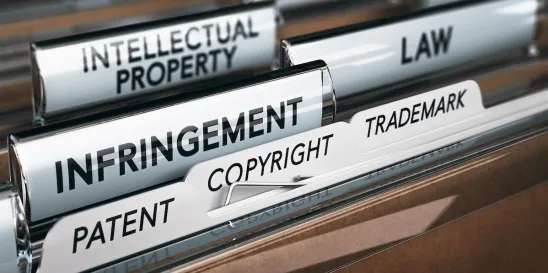The United States Patent and Trademark Office (USPTO) recently published updated guidance emphasizing a very flexible approach to determining obviousness under 35 U.S.C. § 103, consistent with the U.S. Supreme Court’s opinion in KSR v. Teleflex. The guidelines are written for USPTO personnel but combined with the Manual of Patent Examining Procedure (MPEP), they provide guidance to practitioners. While purporting to say nothing new, there may be some helpful clues for practitioners among the five parts of the guidance.
Five Different Ways to Express Flexibility in Obviousness Rejections
Part I of the guidance notes that KSR was decided before the applicability date of the America Invents Act(AIA), March 16, 2013. With this in mind, in AIA cases (which is almost all of them, now 11 years into the AIA) USPTO personnel are instructed to look at obviousness of a claimed invention “before the effective filing date of the claimed invention” and not before the invention was made (which is pre‑AIA statutory language).
Part II reiterates that USPTO personnel still should base obviousness analysis on the inquiries set forth in Graham v. John Deere: (1) determination of the scope and content of the prior art; (2) determination of differences between the prior art and the claims at issue; (3) determination of the level of ordinary skill in the art; and (4) secondary considerations, otherwise known as objective indicia of nonobviousness, such as evidence of commercial success, long-felt need, and failure of others. Examiner consideration of evidence is something the guidance emphasizes in Part IV.
Part III summarizes how the Federal Circuit Court of Appeals uses KSR’s approach to apply the Graham factors to determine obviousness. The guidance discusses a flexible approach to understanding the scope of the prior art and a flexible approach to providing reasons to modify the prior art. Among other things, this flexibility comes from treating a person of ordinary skill in the art as someone with ordinary creativity, common sense, and common knowledge, and not as an automaton. While common sense and common knowledge cannot supply a missing element in prior art, an Examiner can fill in allegedly missing teachings with an ordinarily skilled artisan’s common knowledge as the Examiner sees it. The section ends with emphasis on articulation of reasons for obviousness, and reliance on evidentiary support, particularly when dealing with elements not in the prior art combination being relied on.
Part IV reminds USPTO personnel of the requirement to consider any objective evidence of nonobviousness in the record. Such evidence may rebut an Examiner’s prima facie case, but also may go further to provide evidence of nonobviousness. The guidance notes that a mere reason to modify the prior art may not suffice for a conclusion of obviousness. On the other hand, attorney arguments against an Examiner’s “common sense” or “common knowledge” assertions largely are considered insufficient. Evidence that an applicant presents needs to be accompanied by an affidavit or declaration.
Part V calls attention to fact articulation and sound reasoning. Explanations of the legal conclusion of obviousness may differ based on technology, factual situations, presentation of relevant facts, and lines of reasoning for each case. Any legally proper conclusion of obviousness rejection will include findings of fact and a reasoned explanation showing why the claimed invention would have been obvious to a person having ordinary skill in the art (PHOSITA).
Potential Responses of Practitioners
It is no secret that obviousness rejections have been more difficult to overcome after KSR.
The playing field can seem uneven because of the kind of evidence on which an Examiner can rely to make out a prima facie case of obviousness, and the kind of evidence that patent practitioners need to compile to rebut that prima facie case: Examiners can simply opine on what an ordinarily skilled artisan would think. Such opining is taken to be a “reasoned explanation”. On the other hand, an Examiner may treat reasoned explanations from practitioners as attorney argument. Practitioners may need to assemble and present evidence of secondary considerations, which can be both challenging and expensive.
What can practitioners do under the current regime? Here are a few suggestions:
- Consider and refute the Examiner’s interpretation of disclosures to tie prior art references together. Does the “evidence” to which the Examiner points in the prior art truly provide the required link? Is reasoning for tying the references together clearly articulated and is the “evidence” supported by fact?
- Consider and challenge reliance on common sense or common knowledge to fill in missing claim elements. What is the ordinarily skilled artisan’s “common sense” or “common knowledge” to which the Examiner points? On the other hand, is the Examiner overemphasizing the importance and explicit content of the art to pass over certain claim elements? Is the common knowledge in the art or the art itself prior art (“before the effective filing date”)?
- Ensure that the Examiner’s “broadest reasonable interpretation” of claim language is supported. Does the specification support the interpretation? Is it consistent with the knowledge in the art before the effective filing date?
- Assess whether the prior art relied on is analogous to the claimed invention. Arguing that prior art is nonanalogous can be an uphill battle much of the time, but does the Examiner’s position seem inconsistent with common sense and ordinary creativity? Is the prior art in the same field of endeavor as the claimed invention? Alternatively, is the prior art reasonably pertinent to the problem that the claimed invention solved?
- Look beyond the disclosures the Examiner identifies. When prior art is combined to form an obviousness rejection, does one reference explicitly teach away from what is relied upon in another reference? Does the prior art include statements that teach away from the claimed invention?
- Consider a new approach. Would an appeal, with a different sets of eyes, re-focus the view on the applicant’s position and show whether the Examiner’s articulated reasoning is sound? Would a presentation of secondary considerations of non-obviousness be a more compelling approach? Which is more cost-effective?
Takeaway
Examiners have a great deal of leeway in formulating obviousness rejections, particularly under the new guidance. The perceived “ordinary creativity” of an ordinarily skilled artisan can translate into quite creative assertions of obviousness. Practitioners can combat such assertions with careful scrutiny of obviousness rejections that look for missing pieces in the prior art combination on which the Examiner relies as set forth in the available guidance materials.





 />i
/>i

